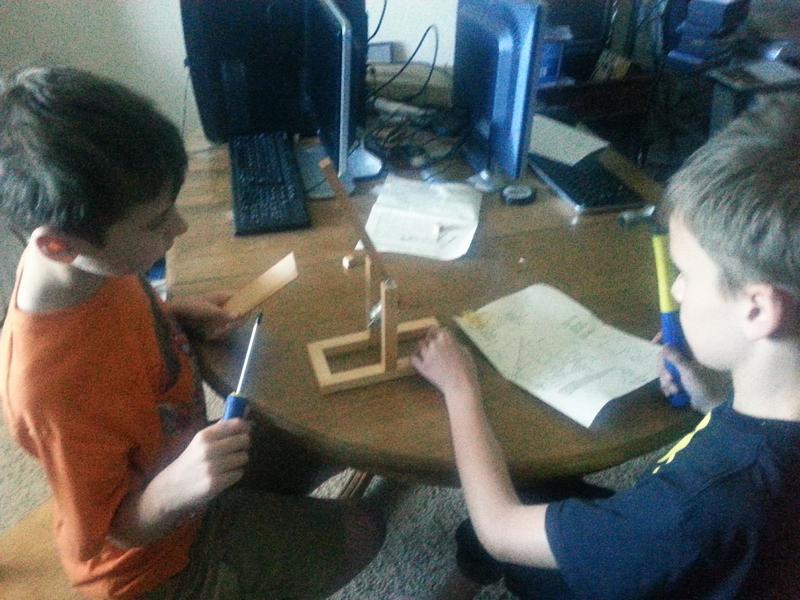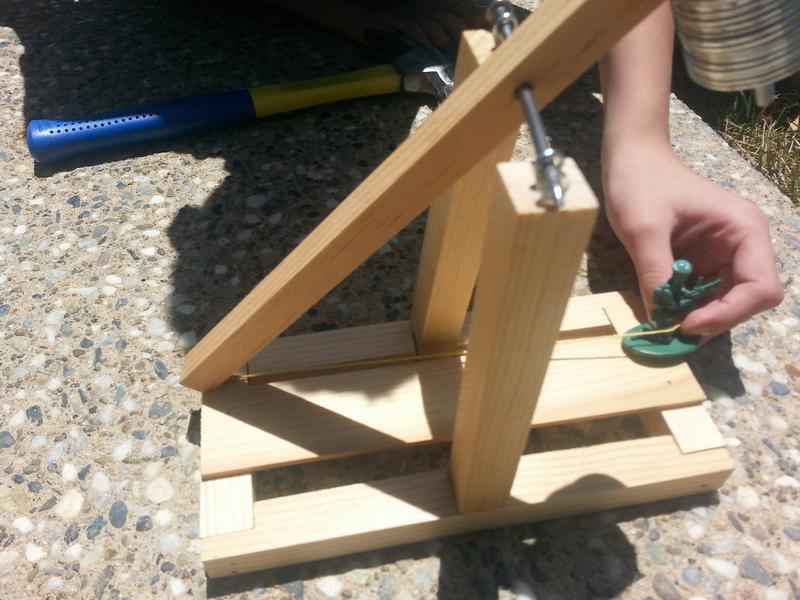How old school? The 13th century, that's how old school.
Sandra Dunnebacke of the Impression 5 hands-on science and learning center sent us a trebuchet. That's right, a trebuchet. Nothing says fun to kids like using a hammer and nails and then the awesome power of physics to hurl objects in the kitchen, but a trebuchet takes that to the next level. If people have even heard of a trebuchet, they use it interchangeably with a catapult, which everyone knows about, but a trebuchet is better because you could sling dead bodies over the walls of enemy castles. The reason is the use of a sling and a counterweight.
A catapult uses tension; a somewhat flexible piece of wood was distorted with a wheel and rope. When the rope was released, a whole lot of potential energy became kinetic and things flew. A trebuchet extends that by using a sling and a lever and a counterweight. In much the same way that experts hit a golf ball farther by using a longer swing, the sling on the end of a lever adds distance to a hurled object.
Rather than using tension, a trebuchet uses a counterweight fighting against gravity - which is how it stores the potential energy that will hurl the object. When gravity is set free, the counterweight goes down, the potential energy is transferred to the other end of the beam and the object goes up.
You can imagine that if you had a 50 foot high trebuchet and a few hundred pounds of weight, you could really do a number on castle walls - from safely outside archer range. Since we have no archers shooting back at us, we kept it small.
A small one like we have can be built for a few dollars in wood and completely safe levels of sawing. You can buy the one we have from Impression 5 and of course Amazon has everything.
The Impression 5 one is good for any age old enough to hold a hammer and hit a nail:

Construction phase.
For a larger one you will need to supervise kids. Plans can be found here:

Credit: Wayne Campbell, Hila Science Camp
The kit we used had three wooden blocks and three pieces of string, the idea being to use different lengths of string and different weights and see which goes farthest. They even provide a neat check list to record results.
We tested, of course...
... but there was no way they were going to be content with little wooden blocks. It was right to army men.

Then finally, they learned about the necessity of counterpoise weight, by trying to launch an egg:
If your kids a are a little younger and want to do a project, conservation of momentum is a better way to go, and I wrote an article explaining that. And they get to shoot off rockets.




Comments